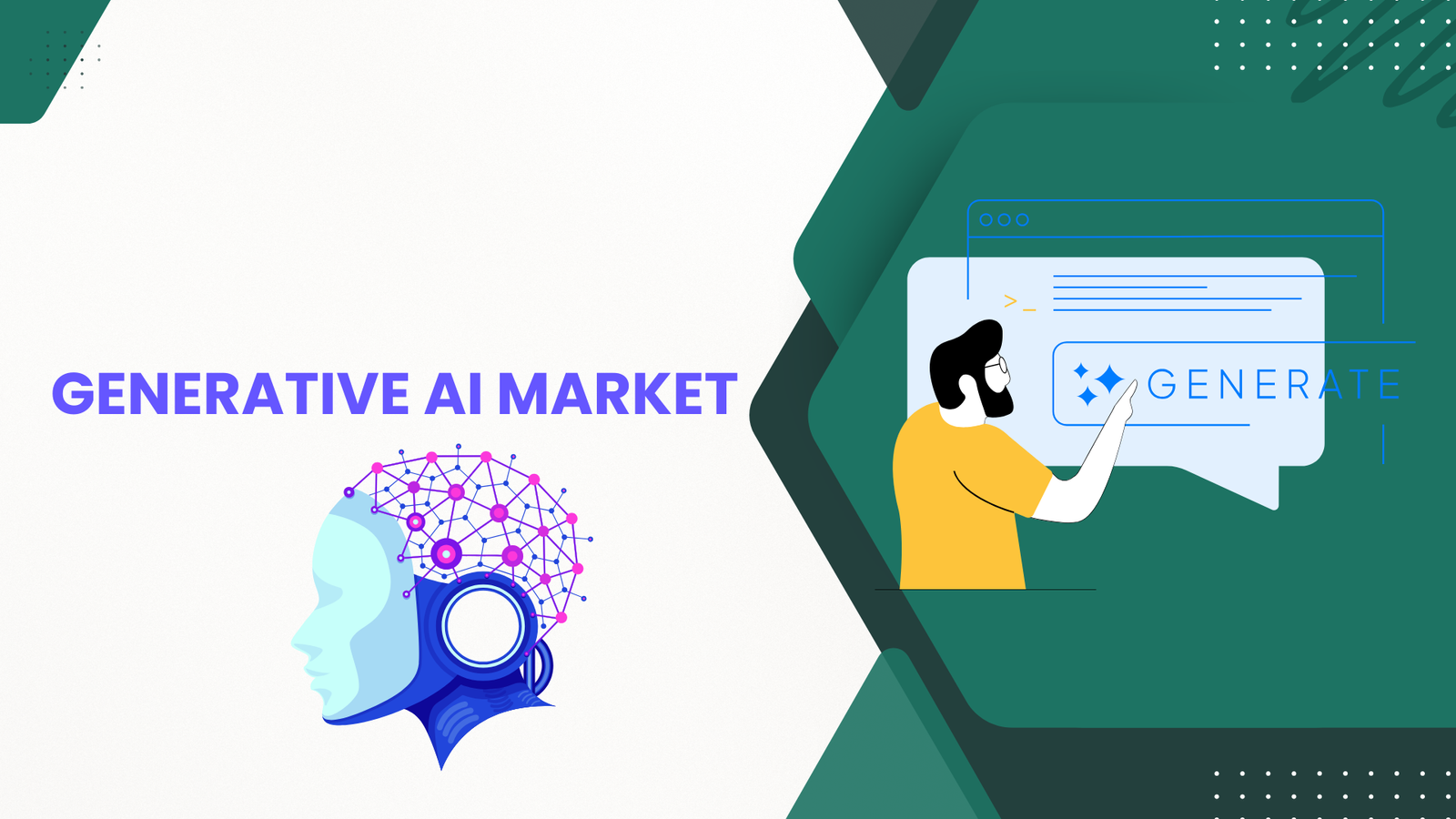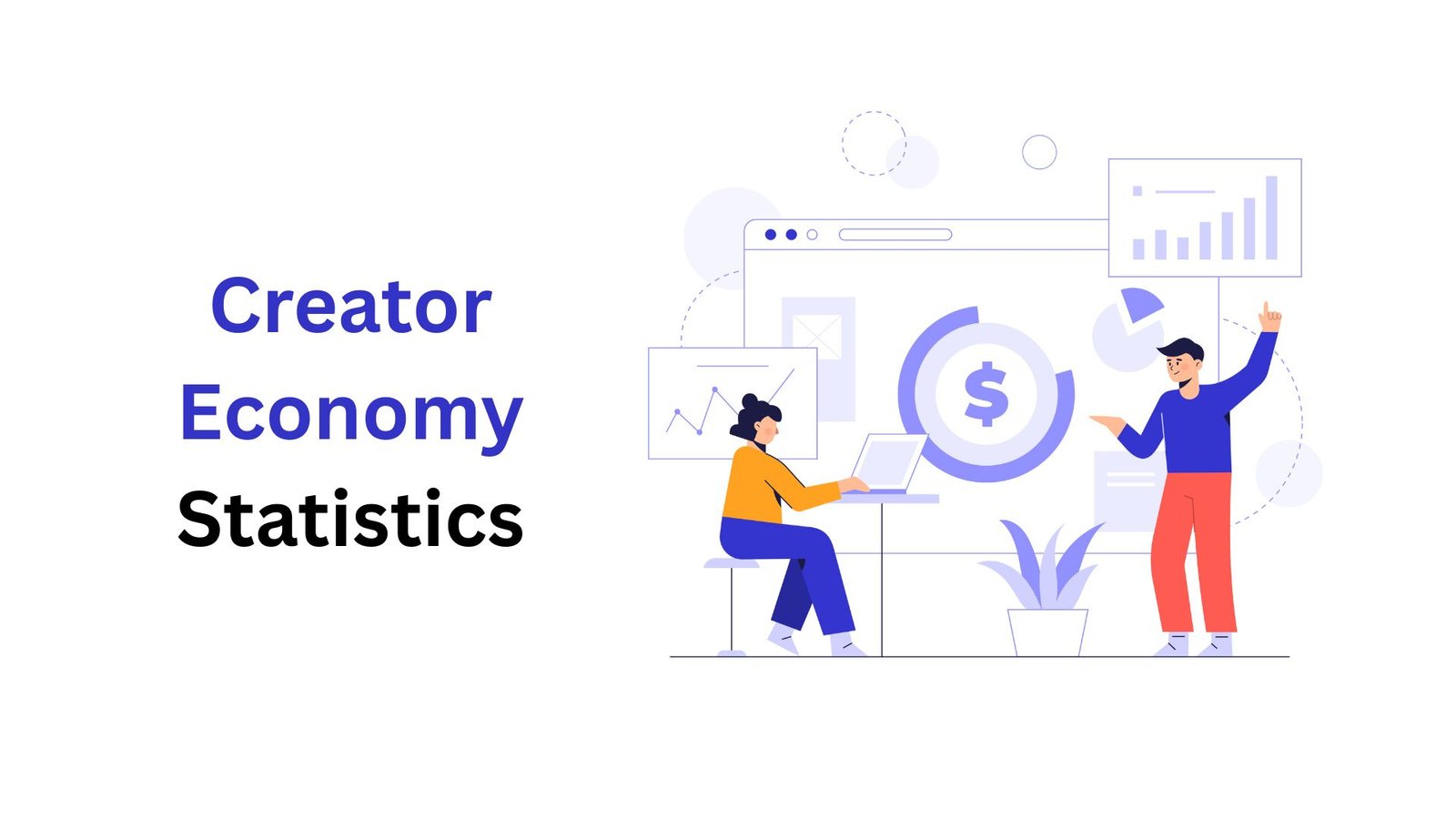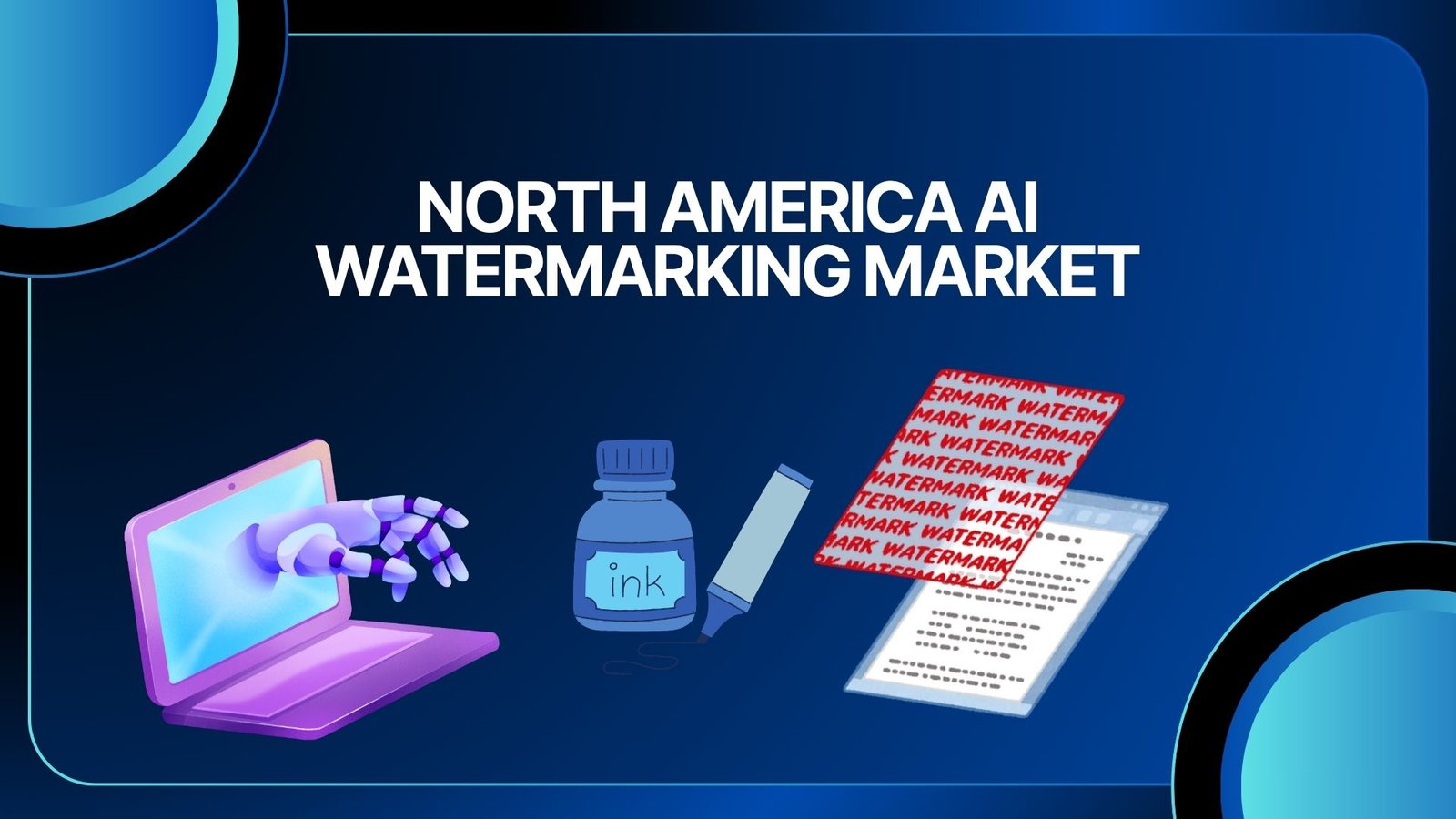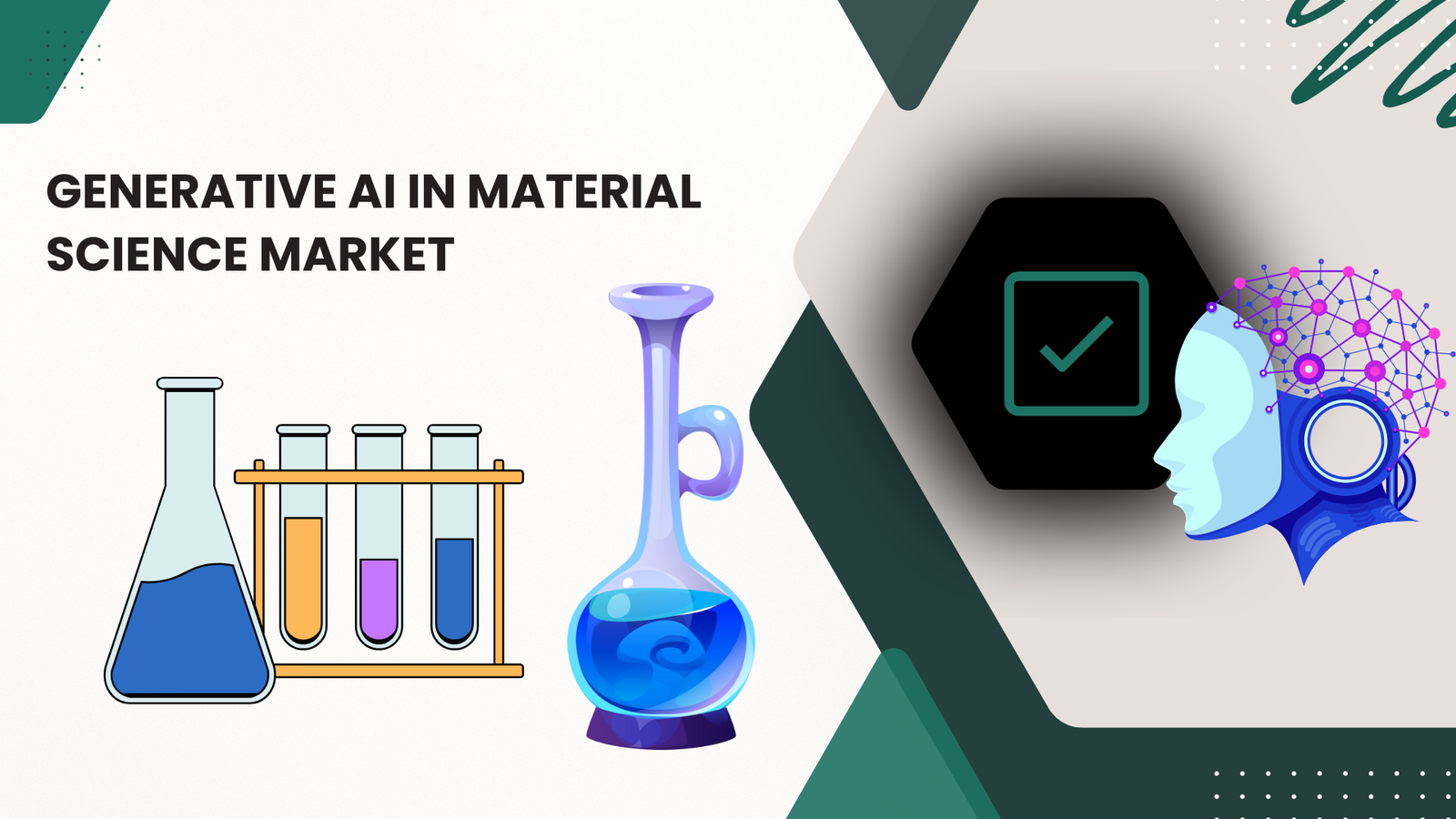Generative AI Market Valued at USD 24.3 Bn in 2025
Updated · Sep 04, 2025

WHAT WE HAVE ON THIS PAGE
Introduction
The global generative AI market is experiencing rapid growth, driven by the increasing adoption of AI models across content creation, software development, healthcare, and customer engagement applications. In 2023, the market was valued at approximately USD 13.5 billion and is projected to reach nearly USD 255.8 billion by 2033, registering a strong compound annual growth rate (CAGR) of 34.2% from 2024 to 2033. The surge in demand is being fueled by advancements in large language models, diffusion techniques, and foundation model APIs that enable enterprises to automate complex tasks and personalize user experiences at scale.
The Generative AI market is a rapidly evolving sector focused on AI technologies that create new content such as text, images, video, and code by learning from existing data. It is transforming various industries by enabling automation of content creation, enhancing productivity, and fostering innovation. With applications spanning healthcare, media, automotive, financial services, and more, generative AI helps organizations innovate faster and streamline workflows. This market is growing swiftly as businesses realize the power of AI in reshaping how work and creativity are managed.
The top driving factors for generative AI adoption include advancing AI algorithms like deep learning and neural networks, the demand for operational efficiency, and the growing need to automate repetitive tasks. Companies seek to improve customer experience, speed up product development, and reduce costs. The rise of tools that support text-to-image, text-to-video, and coding automation also fuels adoption. These factors combine with the expanding availability of large datasets and computing power, enabling generative AI to produce increasingly accurate and useful outputs.

According to Forbes, the generative AI market is set to expand by USD 180 billion over the next eight years, signaling strong investor confidence and underscoring the vast commercial potential of this technology. This projection reflects the accelerating integration of generative AI across industries seeking to automate workflows, enhance creativity, and unlock new digital services.
A collaborative study by professors from Harvard Business School, Wharton, Warwick Business School, and MIT Sloan found that generative AI can increase employee productivity by up to 40%, indicating its practical value in enhancing operational efficiency. In parallel, a productivity survey reveals that under a midpoint adoption scenario, generative AI could raise U.S. labor productivity by 0.5 to 0.9 percentage points annually through 2030, reinforcing its long-term economic impact.
The banking industry is expected to undergo one of the most significant transformations. The adoption of enterprise-grade generative AI tools is projected to generate an annual value of USD 200 billion to USD 340 billion, revolutionizing risk modeling, client servicing, and back-office functions. This shift positions generative AI not only as a technological innovation but also as a strategic imperative across core financial operations.
Key insight Summary
- The Generative AI Market grew to USD 13.5 Billion in 2023 and is projected to reach USD 255.8 Billion by 2033, at a 34.2% CAGR.
- The Software segment dominated with 66.7% revenue share in 2023, driven by strong demand and rapid model advancements.
- By technology, Transformers held the lead with 45.1% share, growing at a 32.2% CAGR due to their versatility in language and image tasks.
- Large Language Models (LLMs) led the model segment, while Computer Vision is expected to post the fastest CAGR, fueled by adoption in transport and surveillance.
- By end use, Media & Entertainment dominated with 24.3% share, leveraging AI for advanced content creation.
- In applications, NLP led the market in 2023, while Computer Vision is forecast to expand rapidly across industries.
- North America led regionally, securing 42.1% share of the global market.
- Generative AI is expected to boost U.S. GDP by 21% by 2030.
- Misinformation remains a concern, with 75% of consumers expressing worry about AI-generated false content.
- ChatGPT adoption surged, reaching 1 million users in 5 days.
- 64% of businesses believe AI will improve productivity.
- In adoption rates, 58% of companies in China already use AI (30% considering), compared to 25% in the U.S. (43% considering).
- 73% of Indians use generative AI, followed by 49% in Australia, 45% in the U.S., and 29% in the UK.
- Millennials and Gen Z account for 65% of users, with 72% employed.
- 6 in 10 users feel close to mastering generative AI, while 70% of Gen Z report active usage and 52% trust AI for decision-making.
- 52% of users report increasing usage over time.
- 75% of users want to apply generative AI for work automation and communication.
- 38% use it for fun, and 34% for learning.
- Among marketers, top uses include content creation and copywriting (76%), inspiring creativity (71%), market data analysis (63%), and image generation (62%).
Analysts’ Viewpoint
Technologies increasing generative AI adoption include large language models, transformers, low-code development platforms, and integration with existing AI stacks. Automation of creative and content-related tasks draws substantial attention, as does the use of AI to augment human capabilities across many functions. Tools that combine multiple AI modalities, such as visual and textual inputs, further push wider acceptance by offering richer applications. These technological enablers make it easier for organizations to embed generative AI into their core processes.
Key reasons for adopting generative AI hinge on the business benefits it delivers. These include automation-driven cost savings, faster time to market, enhanced customer engagement through personalization, and improved creative output quality. Companies also adopt generative AI to remain competitive as AI integration becomes a standard part of digital transformation. The ability to analyze large datasets for trends and insights further motivates adoption to support strategic decision-making and innovation.
Investment and Business benefits
Investment opportunities in generative AI are expanding as companies and investors recognize its vast potential. The market attracts funding for software platforms, AI models, and specialized applications across sectors. Long-term prospects remain strong due to continuous technological progress, increasing enterprise interest, and the multifaceted uses of generative AI. Investments focus not just on core AI algorithms but also on solutions that integrate AI into workflows, improve ease of use, and address industry-specific needs.
Business benefits of generative AI include increased productivity by automating routine tasks, enabling hyper-personalization of customer interactions, and accelerating research and development cycles. It helps reduce operational costs and frees human resources to focus on strategic work. Generative AI also improves decision-making through data analysis and enhances creativity by generating new ideas and designs. These benefits contribute to stronger competitiveness and dynamic innovation cultures in companies that adopt it.
Regional Insight
In 2023, North America held a dominant market position, capturing more than 42.1% of the global revenue share, equivalent to approximately USD 5.6 billion. This leadership can be attributed to the region’s advanced digital infrastructure, robust R&D investments, and early adoption by leading tech enterprises. The strong presence of cloud service providers, along with favorable regulatory and funding environments, has further accelerated the commercialization of generative AI technologies across sectors such as media, finance, and enterprise software.

Driver
Growing Adoption in Content Creation and IT Sectors
One of the main drivers for the Generative AI market is the rising adoption of AI technologies in content creation and the IT and telecommunications sectors. Companies are increasingly using generative AI to automate tasks, generate creative content such as text, images, and videos, and improve customer experience. This shift is supported by advancements in deep learning and large language models, which enable higher quality and faster output. AI-powered tools that streamline processes attract businesses looking to enhance productivity and reduce costs.
In addition to content creation, the IT and telecom industries are embracing generative AI for automating complex workflows and analyzing large datasets efficiently. This focus on automation and innovation helps companies stay competitive and meet growing customer demands for personalization and faster service. Overall, the surge in generative AI use across these leading sectors is significantly driving the market’s robust growth trajectory.
Restraint
High Computational Costs and Resource Requirements
A key restraint limiting the growth of the generative AI market is the high computational cost and resource demands associated with developing and running advanced AI models. Generative AI requires powerful hardware, such as GPUs and large-scale cloud infrastructure, to train and deploy models effectively. These costs can be prohibitive for smaller companies or startups, limiting widespread adoption and slowing down innovations from emerging players.
Moreover, maintaining and updating generative AI systems demands continuous investments in infrastructure and skilled technical teams, adding to operational expenses. The energy consumption and environmental impact of running large AI models also raise concerns. These financial and sustainability challenges may hinder the market’s pace of growth unless more efficient and cost-effective solutions are developed.
Opportunity
Expansion in Personalized and Automated Applications
The generative AI market holds significant growth opportunities through the expansion of personalized and automated applications across industries. As businesses seek to tailor content, marketing, customer service, and product design to individual preferences, AI-based generation offers scalable and cost-effective solutions. This drives demand for conversational AI, AI-powered assistants, and hyper-personalized content generation in sectors such as retail, finance, healthcare, and entertainment.
Additionally, cloud computing and AI-as-a-Service models make generative AI more accessible to smaller firms, fueling broader adoption. Growing innovation in large language models and multimodal AI systems also opens new use cases like drug discovery, medical imaging, advanced design, and creative arts. These emerging applications provide a fertile ground for market players to capture new revenue streams and expand their customer base.
Challenge
Ethical and Regulatory Concerns Around AI Use
A major challenge facing the generative AI market is the growing ethical and regulatory scrutiny over AI-generated content. Issues like deepfakes, misinformation, and biased or inappropriate outputs raise concerns among policymakers, businesses, and the public. Ensuring responsible and transparent AI use requires establishing guidelines, monitoring, and accountability mechanisms, which can slow down product rollouts and innovation cycles.
Furthermore, the fragmented global regulatory landscape creates uncertainty for companies operating across regions. Organizations must balance innovation with compliance, which demands additional resources and careful governance. Until clear standards evolve, these ethical and legal concerns will remain a critical challenge for generative AI market growth and adoption.
Key Market Segments
By Component
- Services
- Software
By Model
- Large Language Models
- Image & Video Generative Models
- Multi-modal Generative Models
- Others
By Technology
- Generative Adversarial Networks (GANs)
- Transformer
- Variational Auto-encoder (VAE)
- Diffusion Networks
By End-User
- Media & Entertainment
- BFSI
- IT & Telecommunication
- Healthcare
- Automotive & Transportation
- Other End-Users
By Application
- Computer Vision
- NLP
- Robotics & Automation
- Content Generation
- Predictive Analytics
- Others
Top Market Leaders
- IBM Corporation
- Genie AI Ltd.
- MOSTLY AI Inc.
- Google LLC
- D-ID
- Amazon Web Services Inc.
- Microsoft Corporation
- Adobe Inc.
- Synthesia
- Other Key Players
Sources

After graduating in Electrical Engineering, Maitrayee moved into writing after working in various technical roles. She specializes in technology and Artificial Intelligence and has worked as an Academic Research Analyst and Freelance Writer, focusing on education and healthcare in Australia. Writing and painting have been her passions since childhood, which led her to become a full-time writer. Maitrayee also runs a cooking YouTube channel.










